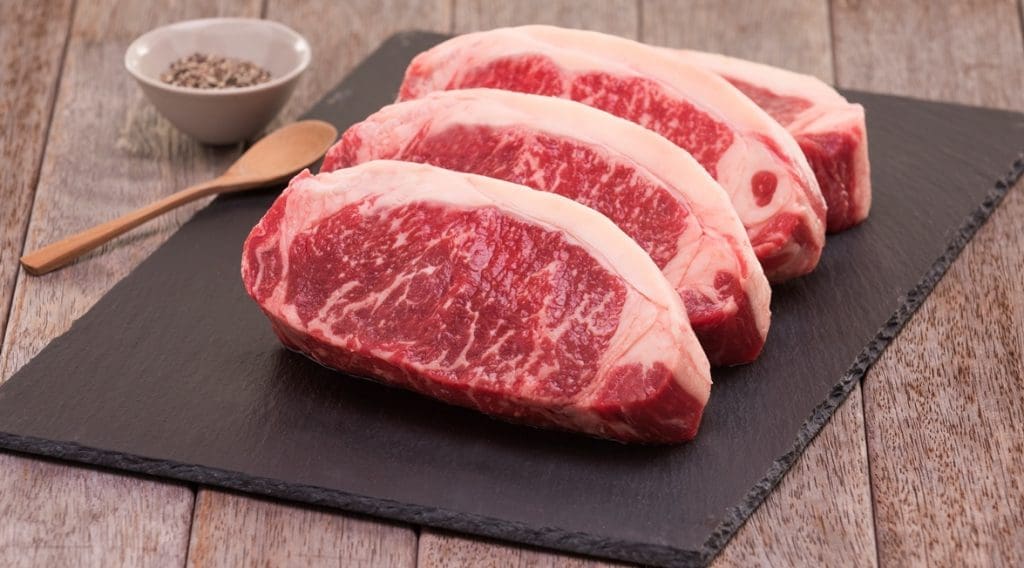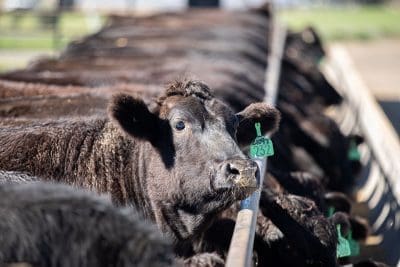
AUSTRALIA’S beef trade into the United States over the past 40 years has been forged primarily on frozen lean manufacturing meat used to help satisfy American consumers’ insatiable appetite for burgers.
But big changes taking place in the US beef industry next year due to drought impact on domestic US beef production have opened up exciting prospects for export of much larger volumes of higher quality Australian chilled grainfed cuts.
With the exception of more niche Wagyu and Certified Grassfed beef, Australia has not had a history of exporting chilled cuts to the US market in great volume. That’s mostly because the US traditionally produces grainfed chilled cuts in abundance through its own feedlot production system.

Len Steiner
Visiting Australia earlier this month, US meat and livestock analyst Len Steiner is one of a growing number convinced that big opportunity exists for Australian chilled cuts into the US next year.
Mr Steiner told a Brisbane market briefing last week that the US beef herd next year was forecast to sink to about 86 million head – its lowest level seen since the 1950s.
That would leave a huge hole to fill for chilled quality table meat, as female slaughter dries-up, and heifers are returned to the paddock for breeding, for years to come.
“The US is likely to become a serious cuts market for Australian grainfed beef next year,” he said.
“As domestic beef supply shortens up in the US in the second half of 2024, there will be more room for Australia to expand its chilled grainfed cuts trade.”
In addition to its economic consulting work, Mr Steiner’s business also does some contract meat buying for large US end-users.
During his Australian visit, he spent time with several large Australian grainfed exporters, talking about product (chilled grainfed round cuts) for supply next year that would ‘normally be sourced out of the US.’
That restaurant chain customer (like many) was concerned about tight supply in the US next year for food service use.
Mr Steiner believes the great majority of Australia’s chilled cuts trade into the US will end up in the food service channel (hotels, restaurants, pubs, clubs etc), rather than retail, where US Country of Origin labelling comes into play.
New business
Any growth in chilled cuts trade from 100-150-day Australian grainfed cattle next year would be ‘new business’, coming additional to, rather than in place of Australia’s traditional frozen lean beef trimmings used to produce burger patties, trade sources told Beef Central this week.
Nor would it come at the expense of Australia’s existing chilled beef ‘niches’ into the US, mostly high-value Wagyu loin cuts or Certified Grassfed and Organic beef cuts sold at both retail and food service level.
JBS sees potential
JBS Global chief executive Gilberto Tomazoni and US beef division head Wesley Batista both touched on the topic during a third quarter investor and analyst briefing held late last month.
 Mr Batista said the lower availability of US beef next year was going to be “a great opportunity for grainfed beef out of Australia.”
Mr Batista said the lower availability of US beef next year was going to be “a great opportunity for grainfed beef out of Australia.”
“We’re already seeing that today, where a lot of times it’s much better for us to sell some of the cuts in the domestic market and that volume is going to our grainfed business in Australia. That’s pretty good news for the Australian beef business,” he said.
Mr Tomazoni said one of the benefits from JBS’s diversified global platform was in capturing the opportunities from different geographies as they arose.
“The US will be limited in terms of domestic beef production next year, but Brazil and Australia, where production is growing, will catch this opportunity,” he said.
Trend has already started, says exporter
One of Australia’s largest grainfed beef producers and exporters told Beef Central the trend had already started.
“It’s happening now, to a limited extent, among those bigger US end-user customers who want to know more about the performance of Australian grainfed beef,” he told Beef Central.
“In some cases, they have never previously used Australian beef at all, testing and trialling different product, in anticipation of greatly changed domestic supply conditions next year.”
Some new customers had taken a single initial ‘trial’ carton, followed by a pallet, followed by 6-8 containers at a time, as they had become more confident in the product.
There’s been steady recovery in volume of Australian exports into the US as 2023 has progressed, with preliminary November trade into US/Canada (official figures yet to be released, but expected tomorrow – stand by for a separate summary) around 22,000t.
The chilled proportion of those exports has also started to expand, as the year has progressed.
“There’s already a lot more chilled cuts in the mix, and that will only grow dramatically next year,” the exporter said.
“There’s nothing like high prices to cure high prices, and with current US cattle at record high values due to scarcity, US customers are starting to look elsewhere.”
Currently a ‘massive gap’ exists in the US wholesale market between USDA Choice and Select grade beef, and Australian equivalent 100-day grainfed marbling score 1-2 beef.
What’s confounded many in the beef industry in Australia is just how long large beef kills have been sustained this year in the US, in the face of serious drought since early 2022. But sooner or later, the huge hole that now exists in the US herd must start to be reflected in dramatically lower rates of slaughter.
Early to mid-2024 is now tipped by many as the tipping point.
“There are big food service customers in the US, who are not wedded to domestic-only US beef, who are already actively seeking out alternatives,” the export trader told Beef Central.
“It’s starting to happen. Some of it is in the form of smaller ‘trial’ shipments, because they are not familiar with Australian grainfed, ands are trying to get a handle on performance. But some of the bigger players want to ‘get ahead of the rush’, and secure supply from good sources in Australia.”
Asked whether potential US food service customers were looking specifically for higher marbling scores 2-3 (roughly equating to the upper two-thirds of USDA Choice), he said while they would ‘love more of that type of product,’ as demand grew next year, US buyers would have to become less choosy in imported grainfed.
“We’ve had some very good eating quality outcomes for lower marbling scores 0-1, because what that product might lack in pure marbling performance, it makes up for in the transit (a reference to the lengthened aging process in chilled because of the sea transport travel time from Brisbane or Portland, to east or west coast US.)
“All our early chilled meat exports, regardless of marbling level, are performing very well over there,” he said.
The trader said US-produced ‘No Roll’ (not qualifying for a USDA grade) tenderloins were last week trading in the US at around US$12 to US$12.50/lb. Better quality USDA grades, starting with Select and Choice were much dearer.
In comparison, good Australian grainfed tenderloins were last week trading in a range from US$8.50 to US$10/lb (currency impact included).
In A$ terms, that already represents a difference worth at least A$7/kg, for a product which is considerably better than the cheapest No-Roll USDA.
“That all suggests there is enormous upside in Australian chilled volume to the US next year, especially when US weekly slaughter really starts to buckle,” the trader said.
He said the early interest was in grainfed loin cuts for cutting into steaks, but was already extending into rostbiff (the US market did not like whole rumps), flats, knuckles, point-end briskets and other items.
“The only items that are not yet on the list are shortribs and forequarter meats like chuck and blade. The last time I sold Aussie chuckrolls to the US was in 2013-14 (after the last US drought), but I think we’re heading into a time next year when that happens again,” he said.
Meat language challenges
One of the challenges for Australian exporters, especially with new and emerging US customers not familiar with Australian chilled beef, had been in trading language, the meat trader told Beef Central. Few were familiar with Meat Standards Australia or Australia’s meat trading language.
“We’ve had to work along the lines that this product is equivalent to the upper two-thirds of USDA Choice,” he said.
“They’re not really interested in days-on-feed or teeth, as any sort of quality benchmark – but they’re happy with USDA equivalence. They’ve done their own yield tests, sensory tests and shelf-life tests on the product received so far, so they have already done a lot of due diligence, before the tap gets turned off next year.”
Greater chilled exports to the US next year will inevitably put competitive pressure on traditional chilled export customers like Japan, Korea, the upper end of the Chinese market, and indeed, the better end of the domestic Australian market.
- Livestock market watchers monitoring the recent sharp rise in feeder steer prices in Australia (separate report tomorrow) suspect that in addition to changing seasonal fortunes, part of the shift in demand and price for feeders can be explained by a sense of expectation about grainfed opportunities in the US some time next year.
